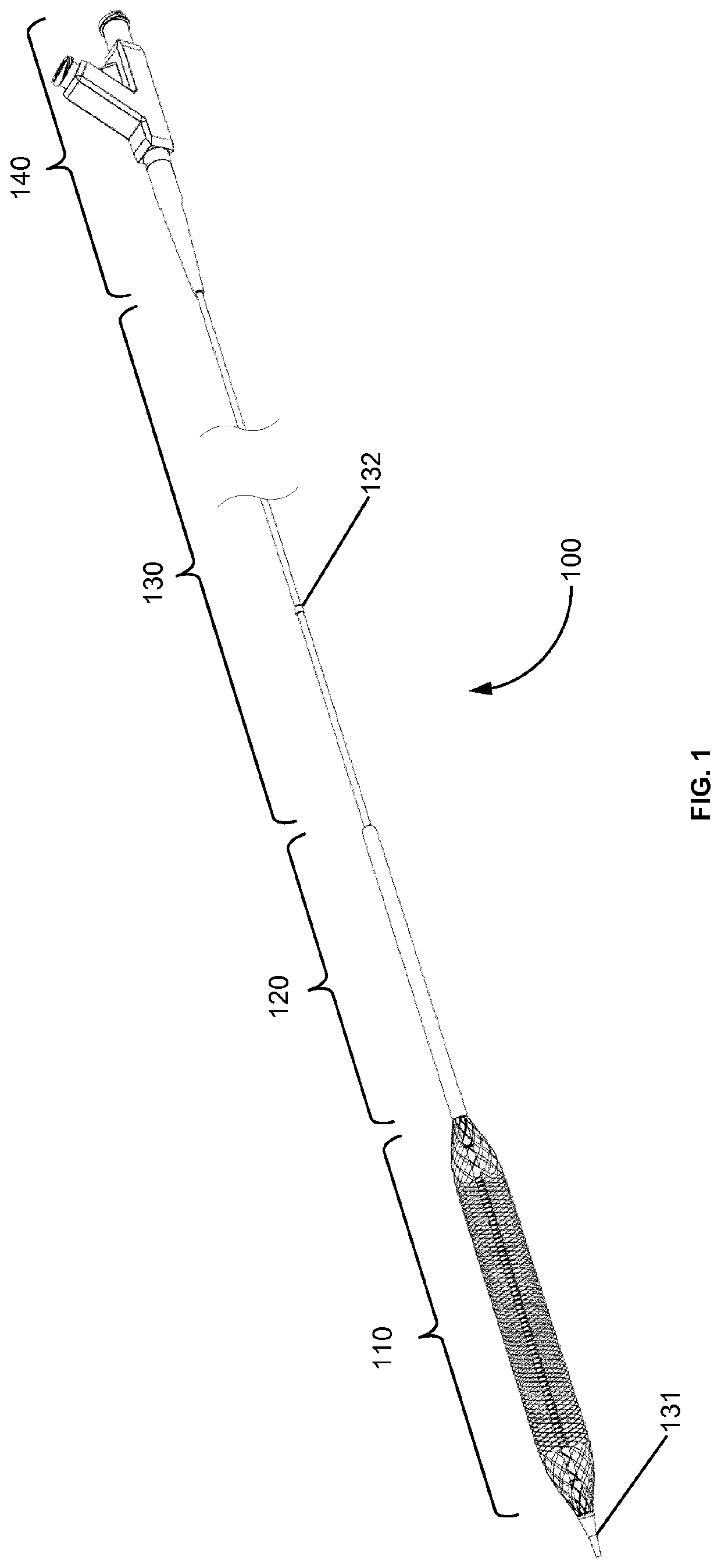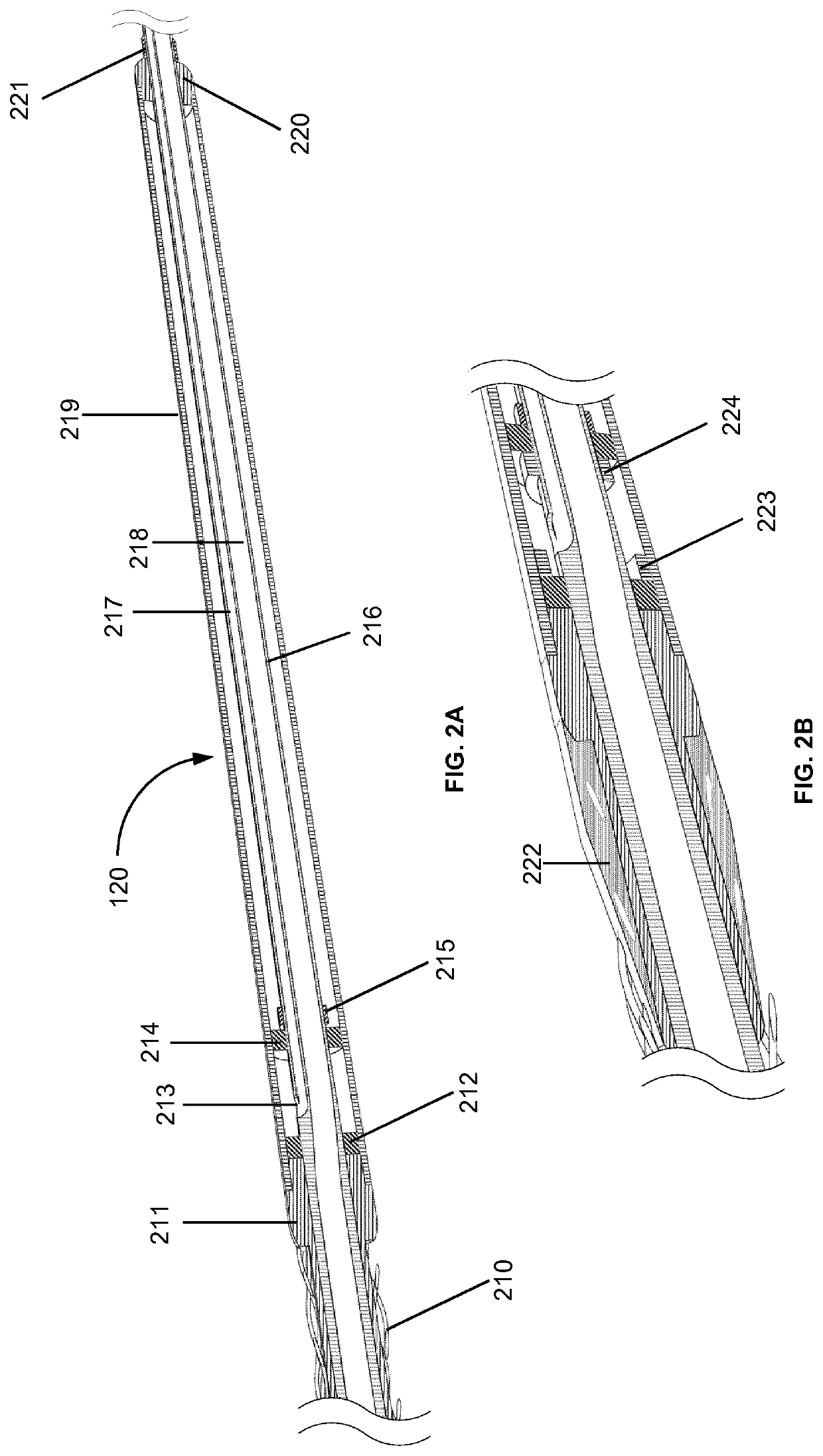The rupture of intracranial aneurysms can be a particularly catastrophic event, requiring immediate medical intervention on the order of minutes to prevent debilitating
brain damage or death.
Limitations in the ease of use and effectiveness of treatment may arise from unpredictable compaction due to variable hemodynamic
blood flow conditions, sub-optimal packing density, and poor anchoring stability in wide-necked aneurysms.
Non-covered stents, while exhibiting a greater degree of flexibility and smaller crossing profile ideally suited for the access to narrow and tortuous vessels, may generally not be sufficient as a stand-alone treatment due to the inherently higher mesh size or
implant porosity.
Thus, they may not be capable of blocking an amount of blood sufficiently adequate to achieve clotting of the blood contained within the
aneurysm.
In consequence, such devices may require co-administration with vaso-occlusive devices, such as aforementioned coils, to achieve complete
aneurysm occlusion.
However, as the latter devices are generally less flexible and exhibit a greater crossing profile, they can't be easily placed in more tortuous and narrow vessels, such as present in the brain.
Further complications may arise from incorrect placement and existence of nearby collateral and / or
branch-off vessels adjacent to the
aneurysm that can provoke the risk of insufficient
perfusion to other vital regions of the organ, thereby severely limiting their use in the cerebrovascular
anatomy.
Contemporary SES intended for permanent implantation, however, are typically not capable of partial or complete device retrieval.
This seemingly unfavorable behavior necessitates strict positional control by the physician to avoid irreversible device misplacement.
The situation can become further complicated in that SES may exhibit variable degrees of foreshortening.
As a result of foreshortening, the length of an undeployed
stent can differ substantially from the length in deployed state, thereby increasing the likelihood for off-target
stent placement issues.
Further, upon
initiation of the (often unilateral)
release procedure, a SES may begin to distally open and anchor in the surrounding vessel, without being fully released length-wise.
Continuing retraction of the
stent retaining mechanism or movement of the catheter system while the stent is only partially deployed can not only lead to an undesired off-target-
center shift in stent position, but may further be accompanied by vessel trauma.
As such, the amount of radial
expansive and / or compressive force that can be generated by a self-expandable stent within a
target vessel can be severely limited, and neither actively controlled nor adjusted in-vivo.
Contemporary SES delivery systems do not exhibit an active means to increase the radial force of the stent member post release.
Further, the presence of a rigid member can introduce an additional stiffness element across the instrument length, thereby negating maneuvering in delicate and tortuous vascular regions, such as the brain.
However, the presence of a chronic outward force can have detrimental effects on the long-term outcome of the therapeutic intervention, frequently leading to continuously present vessel wall
irritation,
inflammation, undesired neointimal growth and subsequently,
restenosis of the affected vascular segment, necessitating re-intervention.
Additionally, there can be a design limit as to how much radial force can be passively exerted onto a diseased vessel wall through the comparably flexible SES
implant by itself without additional dilatation, particularly in the presence of severe tissue hardening and / or
calcification.
However, certain drawbacks can persist over SES systems.
This can result in undesired dimensional disparity, and may manifest itself in potential migration issues, ultimately affecting the efficiency of the
stent placement.
Additionally, as BES can be generally more rigid, and at the same time plastically deformable when subjected to load conditions in the vasculature, their use can often be restricted to protected vessel anatomies, i.e. such that are sufficiently devoid of motion and external forces.
As the outer sheath requires an operational margin or actuation distance to release the stent, both profile and stiffness of the instrument are discontinuous in nature, lowering bending resistance along the transition regions of inner shaft and outer sheath, and impeding both pushability and maneuverability of the instrument through a tortuous luminal system of a patient.
Yet still, because the sheath is situated around an inner catheter shaft there is an
increased risk of the sheath unintentionally adhering to such components of the catheter during operation, resulting in sub-optimal actuation of the sheath and deployment of the stent.
A correlated issue with such delivery systems is that an outer sheath exerts a constant compressive force onto the retained stent, thereby causing the stent to gradually embed itself into the outer sheath during storage.
The accompanying increase of the static frictional force between components can be particularly problematic, because the outer sheath is typically pulled back in a 1:1 ratio with the user's
physical strength, or force.
As the amount of force that is required to retract the sheath scales in proportion to the length of the stent, the force may become so substantial, that the physician operator cannot predictably distinguish between the reaching of a desired release force threshold or device malfunction.
However, the initial tension built up along the length of the instrument to overcome the static regime of friction, combined with a discontinuous or sudden movement, can result in a catastrophic
discharge of
mechanical energy, risking device buckling,
implant misplacement, tensioning of the
vascular anatomy and substantial vascular trauma, to the detriment of the patient.
While the catheter described in US 2013 / 0304179 A1 improves upon shaft stiffness and device profile issues persistent in the prior art, the construction does not address entirely the described operational issues arising from the contact
pairing of the stent (implantable member) with an outer sheath, the associated frictional tension that can build up between these instrument components during operation, sufficient stability of components and accordingly, the
controllability of release.
Taken together, the current state of the art catheter systems do not unequivocally resolve the issues related to a safe and efficient permanent delivery or temporary deployment of implantable members.
Further still, there is an apparent unmet need to provide a self-expandable, temporary implantable member capable of providing an increased, actively controllable radial force to diseased regions of the body in need of treatment.
 Login to View More
Login to View More  Login to View More
Login to View More 


